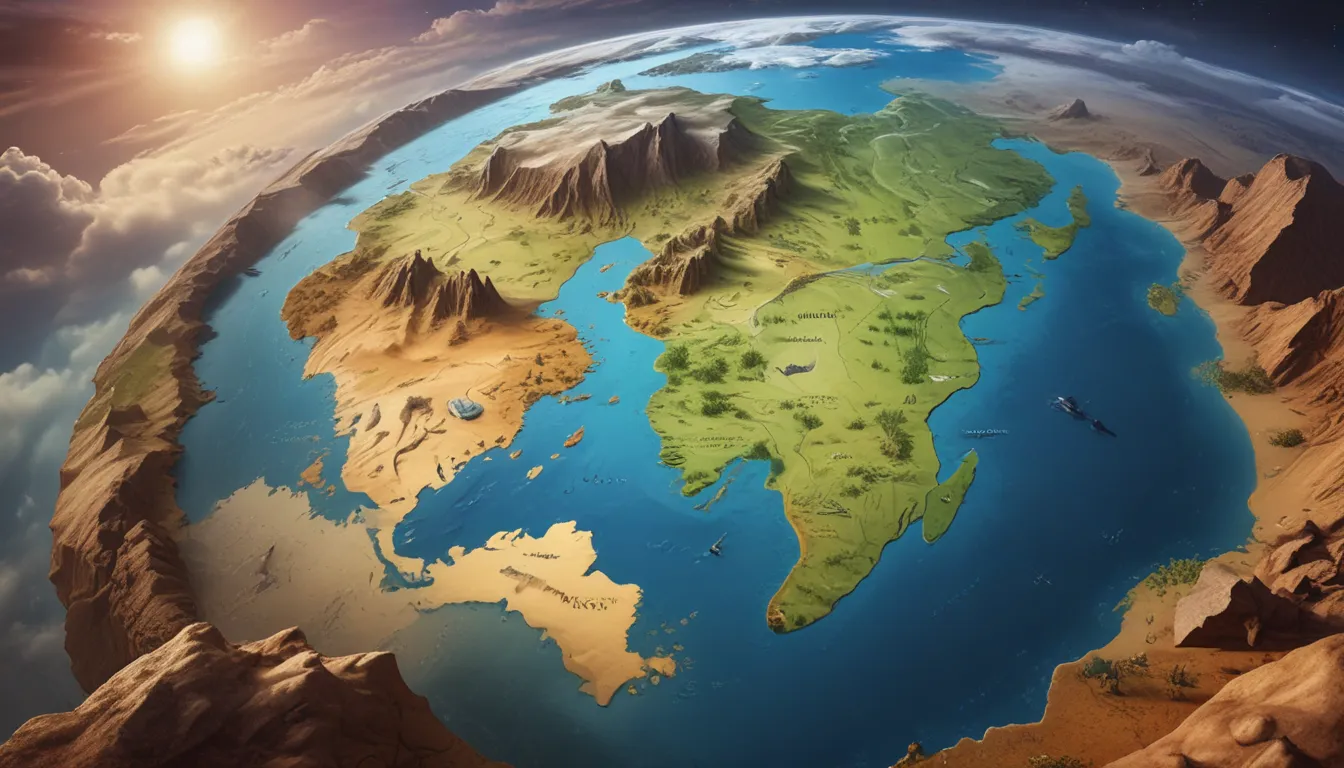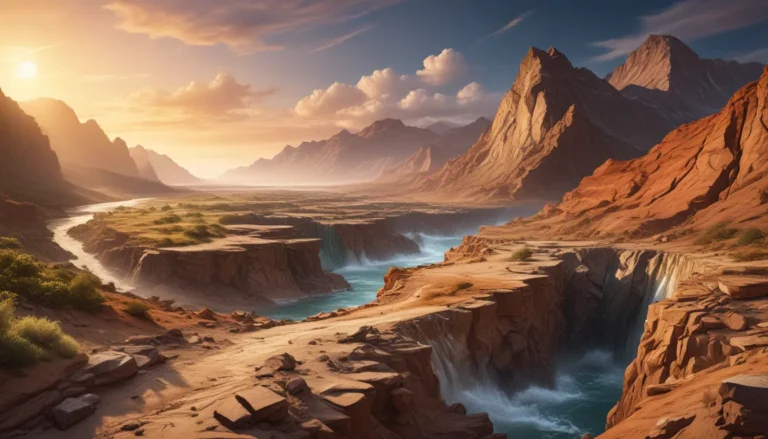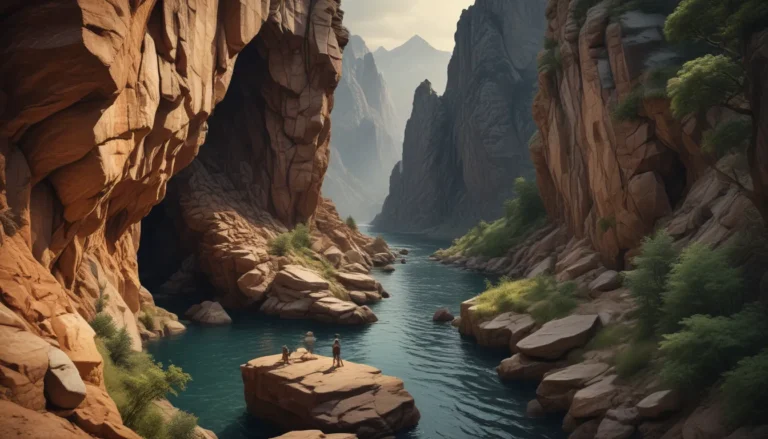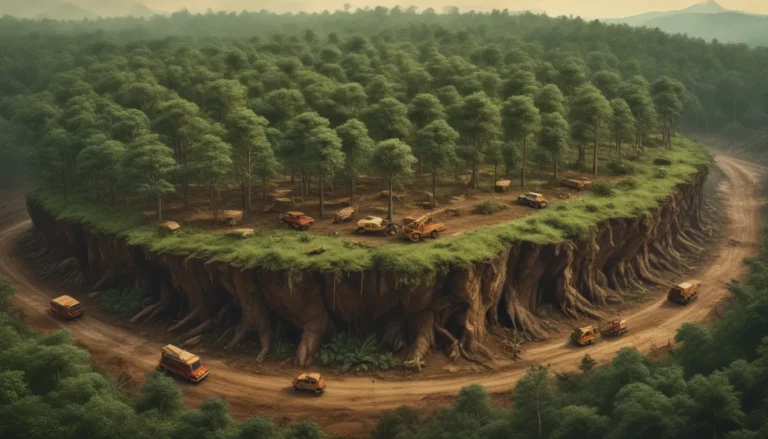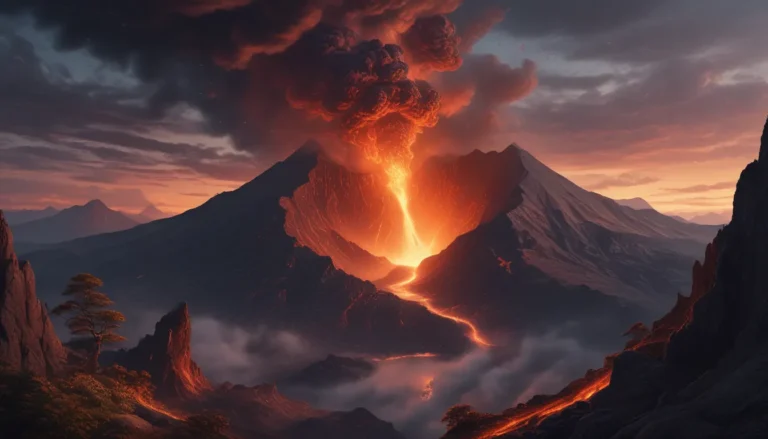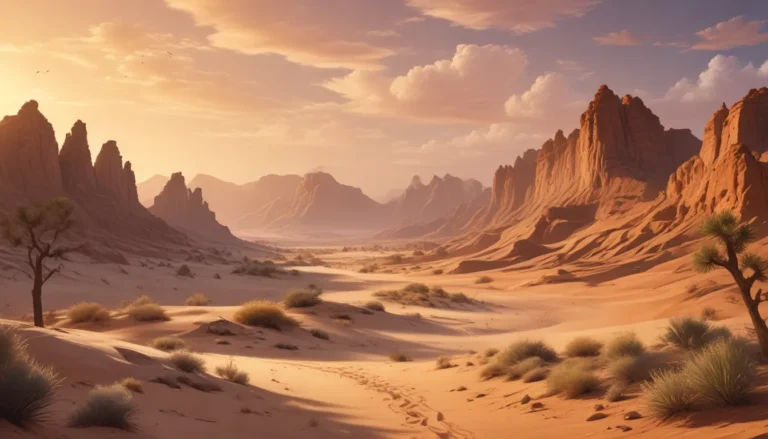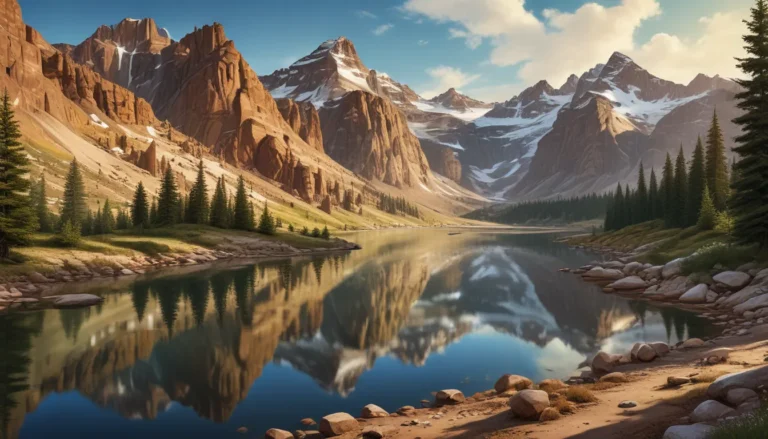A Note About Images: The images used in our articles are for illustration purposes only and may not exactly match the content. They are meant to engage readers, but the text should be relied upon for accurate information.
Welcome to the intriguing world of Pangaea, the ancient supercontinent that continues to captivate our imaginations with its fascinating history and geological significance. Formed over 300 million years ago, Pangaea played a crucial role in shaping Earth’s landscapes and biodiversity. Join us on a journey through time as we uncover 18 captivating facts about Pangaea that will deepen your understanding of our planet’s ancient past and the forces that have shaped it.
Pangaea: The Supercontinent
Imagine a world where all the continents were once connected, forming a massive supercontinent known as Pangaea. Derived from the Greek terms “pan,” meaning all, and “gaea,” meaning Earth, Pangaea existed during the Paleozoic and Mesozoic eras, over 300 million years ago. This colossal landmass was a hotspot of geological activity and evolution.
The Theory of Pangaea
The concept of Pangaea was first proposed by German geologist Alfred Wegener in the early 20th century. Wegener’s groundbreaking theory suggested that the continents were once joined together as a single landmass and later drifted apart, leading to the formation of the continents we see today. This theory revolutionized our understanding of Earth’s dynamic geology and the interconnectedness of its land masses.
Continental Drift: The Moving Puzzle Pieces
The theory of continental drift proposes that the Earth’s crust is divided into large tectonic plates that move and shift over time. Pangaea’s breakup was a result of this process, as the supercontinent split into smaller land masses that eventually formed the continents we know today. One of the key pieces of evidence supporting this theory is the remarkable fit of the continents’ coastlines, like pieces of a jigsaw puzzle coming together.
Uncovering Fossil Connections
One of the most compelling pieces of evidence supporting the existence of Pangaea is the discovery of similar fossils of plants and animals on different continents that were once part of the supercontinent. These shared fossils offer a glimpse into the interconnectedness of Earth’s ancient ecosystems and the evolution of life during Pangaea’s existence.
The Pangean Climate: A World of Uniformity
Pangaea’s continuous landmass created a uniform climate across the supercontinent. With no large bodies of water to disrupt the flow of winds and currents, Pangaea experienced a consistent climate that differed from the diverse climates we see on separate continents today. This unique climate played a crucial role in shaping the biodiversity of Pangaea.
The Legacy of Pangaea: Geological Remnants
As Pangaea began to break apart, remnants of the supercontinent’s geological structures and rock formations remained, serving as a testament to Earth’s ever-changing nature. Features like the Appalachian Mountains in North America and the Atlas Mountains in Africa are believed to be remnants of Pangaea, offering a glimpse into the ancient history of our planet.
Evolutionary Impact: Divergence in Isolation
The breakup of Pangaea had a significant impact on Earth’s biodiversity, as different species on once-connected land masses evolved in isolation, leading to the development of unique flora and fauna on separate continents. This evolutionary divergence contributed to the richness and diversity of life we see on Earth today.
The Birth of Oceans: Pangaea’s Transformation
The breakup of Pangaea led to the formation of new oceans, including the Atlantic Ocean. As the supercontinent began to split, magma filled the gap, ultimately creating the vast expanse of the Atlantic Ocean that we know today. This transformation of Earth’s geography played a crucial role in shaping our planet’s climate and ecosystems.
Pangaea Ultima: A Future Reunion
Scientists speculate that a new supercontinent, known as “Pangaea Ultima,” may form in the distant future as the continents continue to move. This hypothetical scenario could bring the continents back together in approximately 250 million years, reshaping Earth’s geography once again.
Impact on Life: The Ripple Effect
The breakup of Pangaea had far-reaching consequences for life on Earth, as species that were once widespread across the supercontinent became geographically isolated. This isolation led to the development of new species in different regions, contributing to the rich tapestry of life that we see today.
Mountain Building: The Rise of Peaks
The movement of tectonic plates during the breakup of Pangaea led to the formation of majestic mountain ranges around the world. From the towering Himalayas to the scenic Alps and Andes, these mountains are a testament to the immense forces that shaped Earth’s landscapes during Pangaea’s breakup.
Pangaea and Ancient Creatures: Fossil Insights
Fossil evidence of ancient creatures like the mesosaurus, found in both South America and Africa, provides further support for the theory of Pangaea. These ancient fossils offer a glimpse into the interconnected ecosystems that existed during Pangaea’s reign and the diverse wildlife that roamed the supercontinent.
Permian Extinction: A Time of Change
The breakup of Pangaea coincided with the Permian-Triassic extinction event, one of the most devastating mass extinctions in Earth’s history. The restructuring of global environments as Pangaea fragmented likely played a role in this extinction event, highlighting the interconnectedness of Earth’s geological and biological systems.
Pan-African Mountains: Ancient Relics
The Pan-African Mountains, including the Atlas Mountains in North Africa and the Drakensberg Range in South Africa, are remnants of the ancient mountain belts formed during the assembly of Pangaea. These majestic peaks serve as a reminder of Earth’s ancient history and the forces that have shaped its landscapes over millions of years.
Pangaea’s Unity: A Lesson in Connectivity
Pangaea is more than just a historical supercontinent – it is a powerful reminder of the interconnectedness of Earth’s geological and biological systems. By studying Pangaea, scientists gain valuable insights into the history of our planet and the forces that continue to shape it today. Understanding our planet’s past allows us to better comprehend the present and anticipate future changes, highlighting the ever-evolving nature of Earth.
Conclusion: A Journey Through Time
In conclusion, Pangaea stands as a testament to Earth’s dynamic geological history and the interconnected nature of our planet’s land masses. The study of this ancient supercontinent provides valuable insights into the forces that have shaped Earth’s landscapes, biodiversity, and climate over millions of years. As we unravel the mysteries of Pangaea, we gain a deeper appreciation for the ever-changing nature of our planet and the profound impact of geological processes on life on Earth.
FAQs About Pangaea
- When did Pangaea exist? Pangaea existed during the Late Paleozoic and Early Mesozoic eras, around 300 to 175 million years ago.
- How did Pangaea break apart? The breakup of Pangaea was a result of plate tectonics, with the supercontinent gradually splitting into smaller land masses over millions of years.
- Did dinosaurs exist during the time of Pangaea? Yes, Pangaea was home to many species of dinosaurs who roamed the unified landmass and evolved in isolation.
- What evidence supports the existence of Pangaea? Evidence includes matching fossil records, rock formations, and the complementary shapes of continental shelves.
- Are all current continents part of the original Pangaea? No, the current continents are the result of Pangaea’s breakup and subsequent movement.
- Did Pangaea impact climate patterns? The formation and breakup of Pangaea had a significant impact on climate patterns, shaping Earth’s climate over millions of years.
- Are there any remnants of Pangaea still visible? Features like mountain ranges and rock formations are believed to be remnants of Pangaea’s existence, offering a glimpse into Earth’s ancient history.
As you delve into the captivating world of Pangaea, remember that each discovery brings us closer to understanding Earth’s intricate history and the timeless forces that continue to shape our planet today. Embrace the wonder of Pangaea and its legacy as you explore the mysteries of our planet’s ancient past. Join us on this enlightening journey through time and uncover the secrets of Earth’s ancient supercontinent.
